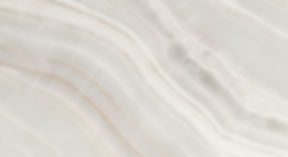In this week's blog post, we feature one of our favorite metallic minerals: Pyrite. We'll begin with some basic and general facts about pyrite to make you familiar with it, and then we'll dive into some more geologic goodness!
So what is pyrite?
Pyrite is a member of the sulfide group. Sulfides are minerals that result from a fusion of metal ions and sulfur ions. Pyrite is an iron sulfide mineral, meaning that the metal ions come from iron that is present during the mineral formation. It is relatively soft for being a metal, with it's hardness being a 6 on the Mohs hardness scale that ranges from 1 to 10.
What environments does pyrite form in?
Pyrite can form under a multitude of conditions and varied environments. It has been found in sedimentary rocks such as limestone and shale, in metamorphic rocks, in hydro-thermal veins, magmatic segregation, and as an accessory mineral in igneous rocks. Spain and Peru tend to be the most abundant sources of pyrite, along with Tennessee, Colorado, Virgina, and California in the U.S.
What do pyrite crystals look like?
The most common crystal structures pyrite is found in are cubic, octahedral, and pyritohedral.
Cubic crystals are crystals that form with 8 points (known as vertices) and 6 faces, forming a cube.
Octahedral crystals resemble two pyramids conjoined together; they have 6 points and 8 faces.
Pyritohedral is the term that refers to pyrite crystals that have an irregular dodecahedron shape, known for it's 12 faces and 20 points.
Most pyrite clusters are observed with a combination of octahedral and pyritohedral crystals. The near-perfect cubic crystals are most often found in spain.
What is pyrite used for?
Because of pyrite's ability to create sparks when struck against another metal or stone, it has been historically used as an ignition material. In early versions of firearms, pyrite was used as an igniter in wheel-locks. Another notable quality of pyrite is it's reflective properties. Early cultures, such as the Incas and Native American tribes, would use pyrite as make shift mirrors. Because of it's striking similarity to gold, it was also historically used in jewelry amongst Greek, Roman, and British cultures. Today, pyrite is the main source of sulfur dioxide which is one of the components in paper production. It is also used to produce sulfuric acid, which is implemented in fertilizers, explosives, and dyes.
Why do we love it?
Here at Geology Rocks! and Minerals, we have a fond appreciation for pyrite! Although the mineral is often referred to as "fool's gold" because of it's similar color and metallic luster to gold, we think it's even cooler than gold! Pyrite is an awesome educational mineral for those starting out in geology who want a dynamic example of crystal structure. Often times people can't believe that pyrite can form in such near-perfect cubic crystals, but it does! It's also the perfect accent mineral. Whenever pyrite is in combination with other minerals, such as in Lapis Lazuli, it helps compliment the other minerals' colors and enhances the specimen for that ultimate metallic luster! It never fails to mesmerize any person, no matter the age or status.

